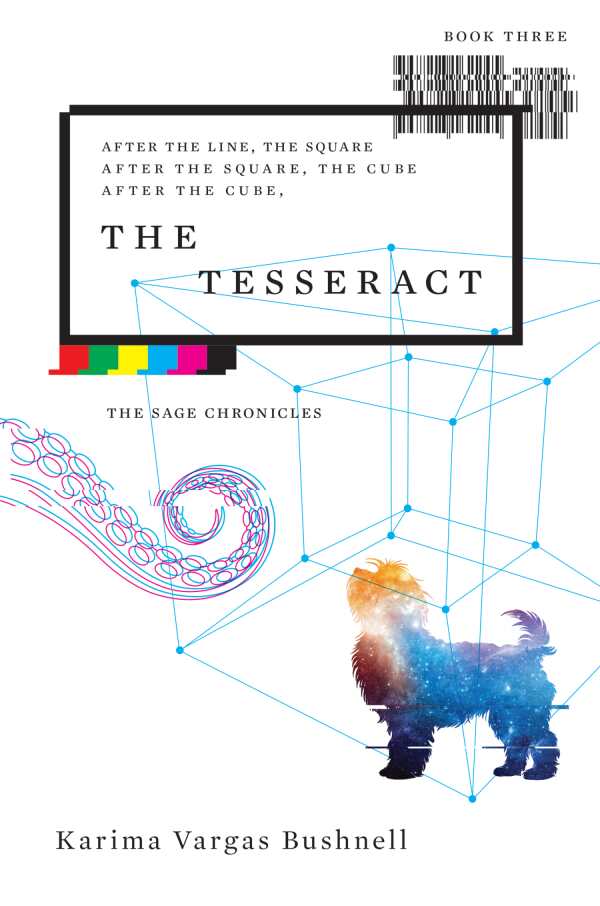
The Tesseract
In its form and shifting subjects, the imaginative speculative novel The Tesseract plays with the power of words and the limits of language.
Karima Vargas Bushnell’s reality-bending speculative novel The Tesseract moves through time, space, and various stories to sort out a multidimensional collapse, a grim future, and a literature competition.
Flipping through timelines, locations, and perspectives, this book is a fast-paced comedy adventure focused on the exploits of Halcyon Sage. Sage’s world has almost ended multiple times; in it, characters from books can come to life, and aliens are nothing new. When he begins to travel through time and space, Sage needs to find a solution to a past tragedy. Along the way, others attempt to fix the multiverse and host a literary event. Changing locations, perspectives, and stakes, the story weaves through different realities as Sage attempts to fix the world through the power of words.
Quick and lighthearted, the book includes an excellent index and fun formatting details. It flows with clear indicators of when and where the metafiction is happening. Jokes are laced throughout, from the narration to the pacing of information. At times, these varying devices make the book hectic, but its general joviality makes its moments of confusion feel fun and deliberate rather than discombobulating.
The book experiments with genres and narrative expectations. Woven throughout Sage’s adventures are courtroom fights and romantic pursuits—both in the form of stories for the novel’s audience and in the form of stories for the characters in the novel. The stacking and blurring of different stories supports the book’s themes of exploration and altering realities; it leads to continual excitement and freshness. It also means that some character arcs, including Sage’s, are less developed: The movement of the plot takes priority over characterizations, and some narrative beats are missed.
Further, at times, the book struggles to balance its clear science fiction world with its inclusion of more serious topics. For instance, a central plotline features Sage attempting to prevent the Gaza war. While the subject is handled with seriousness and empathy, its inclusion clashes tonally with scenes focused on courtroom antics and aliens arguing over grammar. The ease and limits of the solution are a point of awkwardness, too, as is its disproportionate weight in the story.
A wild speculative novel about writing, empathy, and interstellar adventures, The Tesseract celebrates the strange and the silly.
Reviewed by
Katherine Woods
Disclosure: This article is not an endorsement, but a review. The publisher of this book provided free copies of the book and paid a small fee to have their book reviewed by a professional reviewer. Foreword Reviews and Clarion Reviews make no guarantee that the publisher will receive a positive review. Foreword Magazine, Inc. is disclosing this in accordance with the Federal Trade Commission’s 16 CFR, Part 255.
